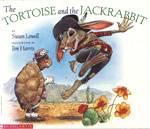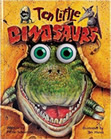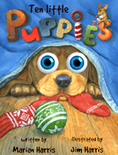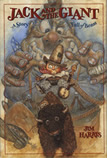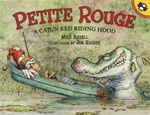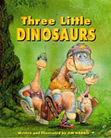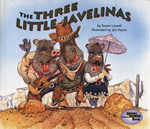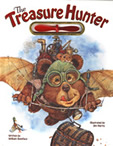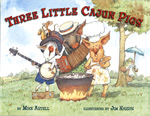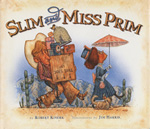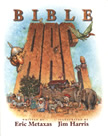Jim Harris Talks About Illustrating...

Towns Down Underground
A Story from Early in the Life of a Children’s Illustrator
Towns Down Underground is one of the first children’s books I ever illustrated, so it brings back a lot of happy memories for me.
At the time I was working on it I lived in an old farmhouse that wasn’t in the greatest shape.

It had actually been scheduled for demolition just before we moved in – the fire department was going to burn it down and practice their fire-fighting techniques on it – but when the owner found out I wanted to live there, he said “OK, go ahead… just don’t bother me if the electricity doesn’t work, or you can’t get running water.” So, in a matter of weeks, I sold my house in town and moved to the middle of a 200-acre cornfield in Indiana.

It wasn’t really just a cornfield… there was a big abandoned woodlot, six barns (all starting to fall in), a creek at the edge of the farm, white-tail deer roaming around, coyotes howling at night, a red fox family with kits that played on the trashpile behind the chickencoop, plenty of rusting old farm equipment to rearrange into forts and hide-outs, and groundhogs poking their heads out of holes when you least expected it.

The electricity really didn’t work too well… it took 3 electricians, a couple visits from the power company, and finally a phone call to my brother (the one who works at a nuclear power station) to figure out what the problem was and fix it.
The water did indeed run… but the pipes in the house were so old that they were all rusted and the rust got swept into the water, so you if you wanted a glass of water you had to let it “settle out” before you drank it. After sitting for about 15 minutes the bottom third of the glass of water would be solid rust particles… and then you would close your eyes and drink the water off the top… because you were too thirsty to wait any longer. Eventually we bought a water softener to fix the problem… and that worked for a while… until lightning struck and blew up the water softener. After that we just bought our drinking water at the store.
I used a huge room in the upstairs of the farmhouse for my studio… and from up there you could watch white-tail bucks crossing the cornfields, and see the farmer who leased the fields moving slowly back and forth in his tractor, plowing or harvesting his crops, and from time to time you could see… Sunshine!!!

Sunshine was a Shetland pony that came to live with us, and she was quite happy to take a kid on a ride to the creek, but if the kid happened to lose his seat, she took it as her cue that the ride was over and it was time to go back to the barn and check whether anyone had by chance deposited a carrot there for her. Needless to say, she did not feel that it was necessary to wait for the dumped rider to remount… and so way in the distance behind Sunshine you could also see a small person trudging all the way back from the creek. It was good in one way… the kid learned not to fall off the horse.
One of the downsides of living in the farmhouse was the grass. There was a LOT of grass… and it took a long time to mow. One day we were gazing out at the humungous yard, with the century-old walnut trees interspersed through it… and it dawned on us that we could save ourselves heaps of time by selling the riding lawnmower and getting sheep. The sheep could graze all the grass down and we could sit on lawnchairs and sip tea instead of driving a hot gassy mower around for several hours each week.
This worked to perfection until we realized that sheep are people too! You can’t just ignore them, you have to take care of them. They need wormer, they need hoof baths, they need penicillin when they have runny noses, they need their hair cut, they need tender loving care when they have babies… and so in the end the sheep cut the grass and we... took care of the sheep (we did NOT have any time to sit on lawnchairs). But we must not have minded too much, because it was a long time before we sold the sheep and got another gassy lawnmower.

So what does all this have to do with Towns Down Underground?
Welllll… just this.
Close to the end of the project, the art director for Towns Down Underground happened to be traveling through our neck of Indiana with her mother and stopped in for a visit.
I don’t think she was used to illustrators’ using sheep to mow their lawns… but she was kind enough to say NOTHING AT ALL about our unevenly grazed front yard… or about how sheep smell, uh, earthy… or even about hoof-sized dents in her rental car!
In fact, a few weeks later, when I received the final check for the project, I noticed it was a bit bigger than agreed on. When I asked about it, the art director explained it was to pay for some changes they had made halfway through the project.
That was normal enough… but still, it seemed a bit larger than you’d expect for that amount of changes.
I thought about it for a while and then I noticed something. That extra bit? It was just enough to buy a lawnmower.
Images and Text © 2009 Jim Harris. All Rights Reserved


